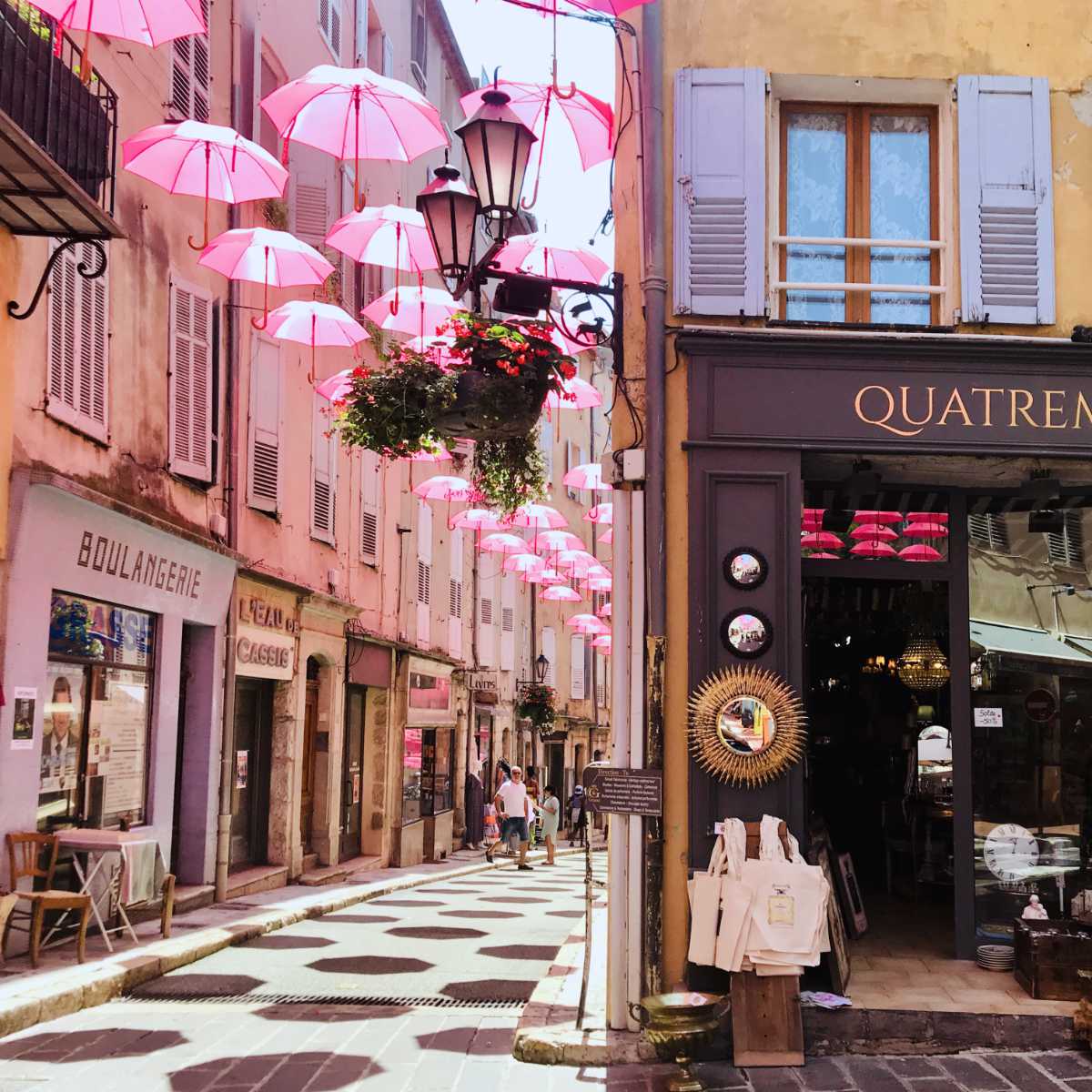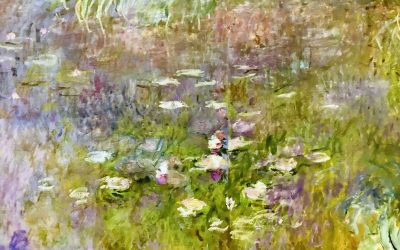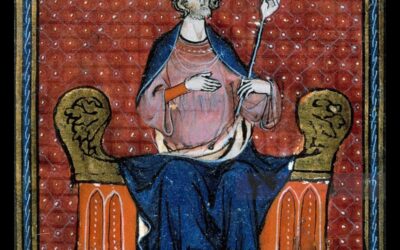The history of regional languages in France is a bit like a linguistic soap opera with plot twists, romances, and occasional betrayals. It all began with the granddaddy of them all, Latin, which was the cool language in Roman Gaul (ancient France) back in the day.
But as time went on, Latin started mingling with the Celtic Gauls and the Frankish tribes, leading to the creation of regional languages like Occitan, Breton, Alsatian, and Corsican.
This includes various languages from the Romance family of languages, Germanic dialects, Celtic and a couple of non-Indo-European languages (like Basque which is not related to any other language).
Then the French monarchy came along, thinking, “Wouldn’t it be great if everyone spoke the same language?” So they put the pressure on, and bam! The rise of the almighty French language began.
As the French kings expanded their power, they declared French the official language of the land, and regional languages started feeling a bit left out.
But the regional languages weren’t ready to go down without a fight. They stubbornly held on, flourishing in the countryside and among local communities. Even today, these regional languages continue to flirt with locals, offering a taste of culture and identity you won’t find in your average French textbook.
There are 23 regional languages in mainland France officially recognised by the French government, in addition to the languages spoken in the overseas territories. So let’s explore all the different regional languages of France, shall we? Allons-y!
- History: Langue d'Oc vs Langue d'Oil
- 1. Breton
- 2. Normand
- 3. Occitan
- 4. Provençale
- 5. Nissart (Niçois)
- 6. Alsatian
- 7. Corsican
- 8. Créole
- 9. Catalan
- 10. Basque
- 11. Flamand/Western Flemish
- 12. Walloon
- 13. Francique Lorrain
- 14. Picard
- 15. Angevin
- 16. Arpitan/Francoprovençal
- 17. Poitevin-Saintongeais
- 18. Bourguignon-Morvandiau
- 19. Champenois
- 20. Franc-Comtois
- 21. Gallo
- 22. Gascon
- 23. Ligurian
- 24. Limousin
History: Langue d’Oc vs Langue d’Oil
The word “langue” in French means “tongue” or “language”. Historically, the area that is now known as France had so many different languages and dialects, that it was broken down into two parts: Langue d’Oc and Langue d’Oil.
Dating back to the Gallo-Roman era, both are Romance languages. However, the differences in the languages were classified based on the response to the prominent word “yes”.
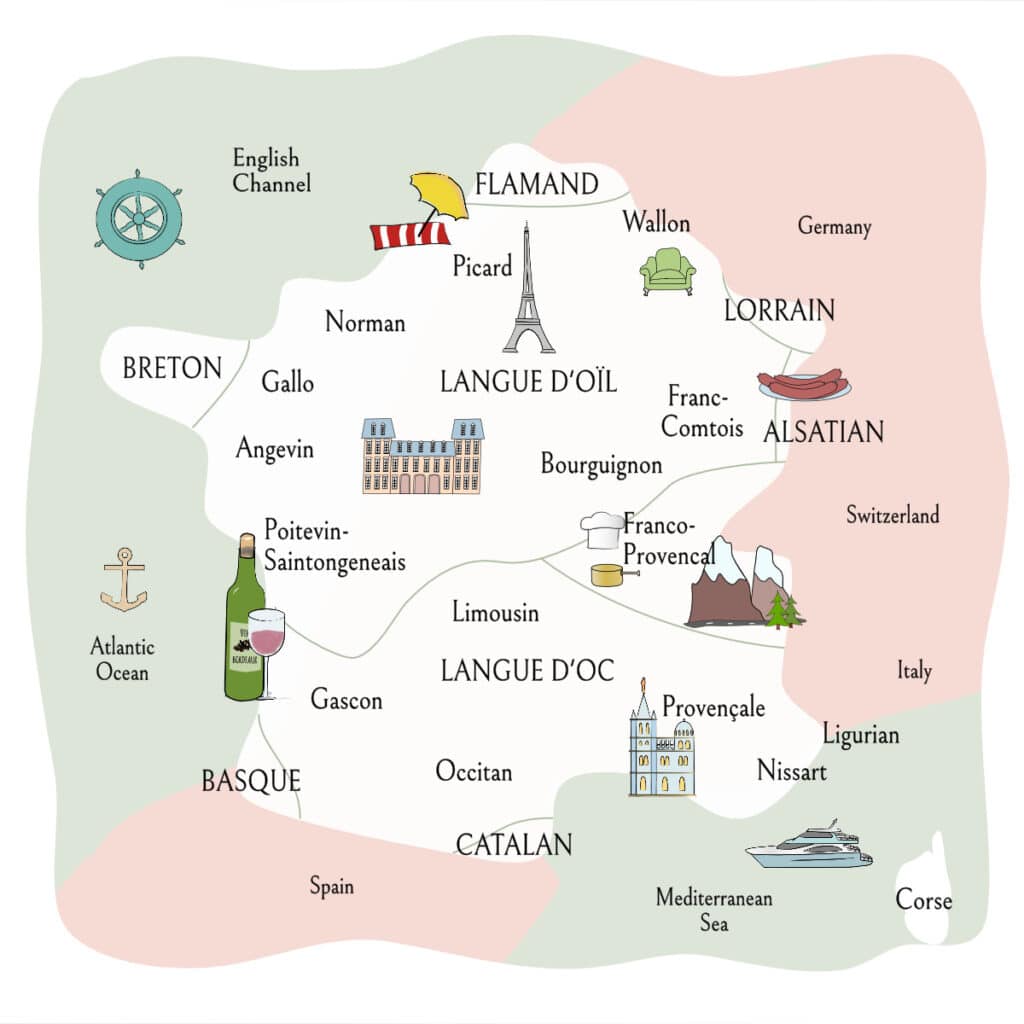
i) Langue d’oïl
Langue d’oïl designates the ancient northern Gallo-Romance languages where the word for “yes” was “oïl.” Today, this “yes” translates to “oui” in French, and the current dominant French language is a descendant of Langue d’oïl.
It was the advance of the French Kings based in Paris slowly conquering and absorbing the regions of the south through marriage and alliances that made the French language we hear today so dominant.
In addition, in 1539 French King François I banned the use of most of these regional languages and insisted on a new language he called “françoys” be used for all official purposes.
ii) Langue d’Oc
In the southern part of France, the word “Oc” was the southern word for “yes“, hence the name “Langue d’oc“. The language Occitan is a descendent of these “Langues d’oc”, and can still be heard in the South of France, in cities like Toulouse, etc.
The region of Languedoc gets its name from this local language. King François I was mostly successful in wiping out Occitan and other regional languages, but some pockets of resistance remain.
1. Breton
In the Brittany, the local language is Breton which derives the old Celtic languages spoken by the Gauls.
Brittany is historically one of the 6 Celtic nations, and the language descends from the Common Brittonic language that was spoken throughout Great Britain during the Iron Age and Roman period.
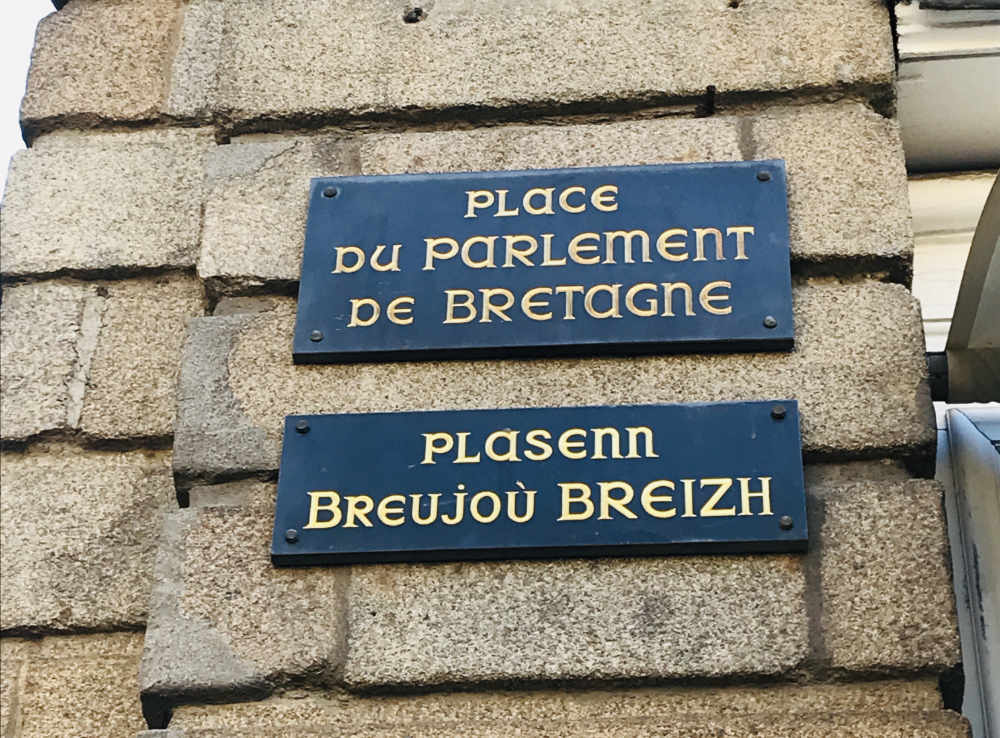
In 1950 there were 1 million Breton language speakers in Brittany, although that has now fallen to around 200k. These days many locals are trying to preserve the historic Breton language from being overtaken by the dominant French language. Bilingual schools have been set up to encourage new generations.
2. Normand
In the Normandy, the locals used to speak the historic “Norman” language before being overtaken by the dominant French language.
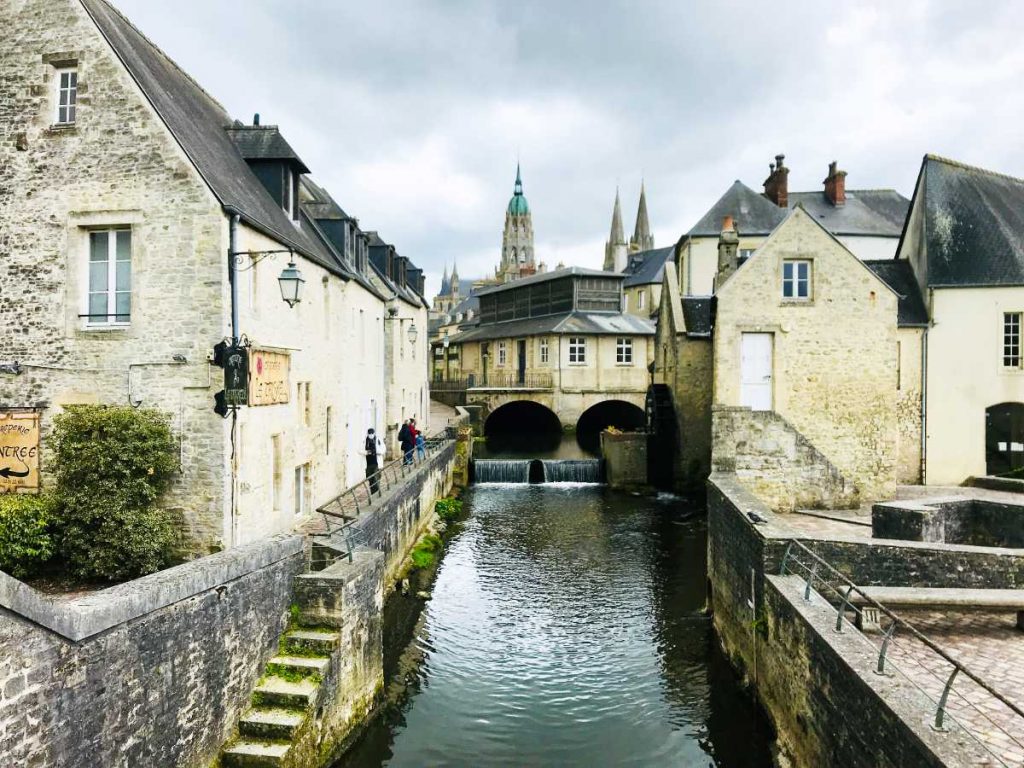
It derives from the langues d’Oil, a romance language that is from the same family as with French, Picard and Walloon. It contains some words from Old Norse since this is the area that Rollo the Viking and his followers conquered and settled in.
This Norman French became the administrative language of Anglo-Norman and Law French used in England, due to William the Conqueror and his Duchy of Normandy descendants making their way across the English channel. (William is also a descendent of Rollo.)
3. Occitan
Occitan is the historical descendent of the “Langue d’Oc“, where “Oc” is still used to say “yes”. Unlike other Romance languages such as French or Spanish, there is no single written standard language called “Occitan”.
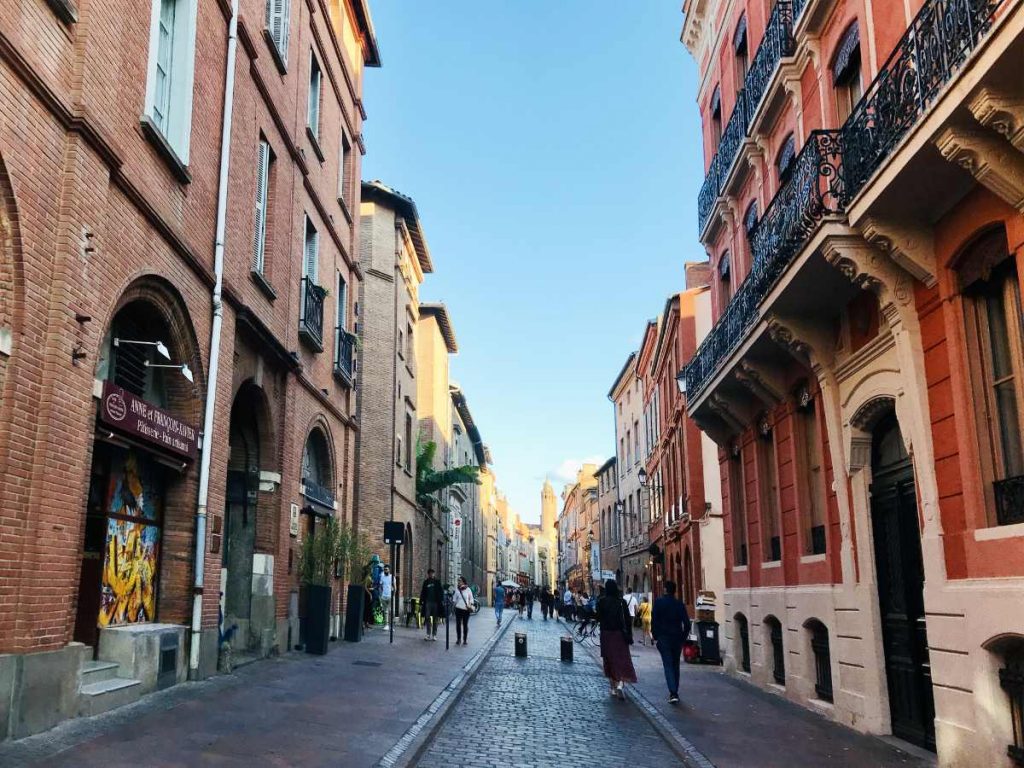
Occitan is the forefather or dialects such as Gascon, Languedoc, Provençal, Auvergne, Limousin, Vivaro-Alpin. All of these dialects are deeply endangered.
In order to maintain some semblance of the language, the metro in the city of Toulouse is officially bilingual in French and version of Occitan.
4. Provençale
Provençale is a dialect of Occitan, and is the language that was spoken in the south of Provence, around Marseille.
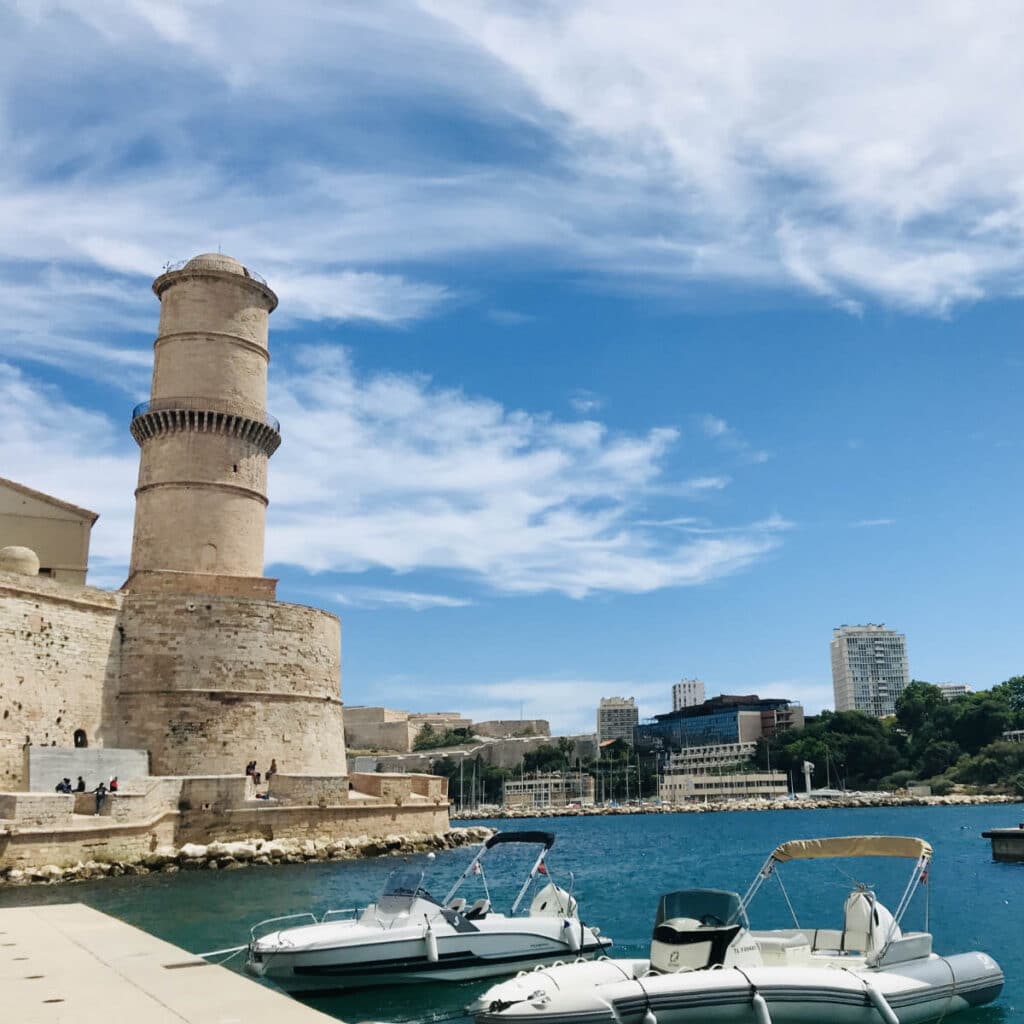
The term Provençale is sometimes used to refer to the whole of the Occitan language, but actually it is considered more appropriate to refer only to the variety of Occitan spoken in Provence.
5. Nissart (Niçois)
Nissart, which is also known as Niçois or Niçart, is a dialect of the Provençale and Occitan languages that was spoken in the city of Nice.
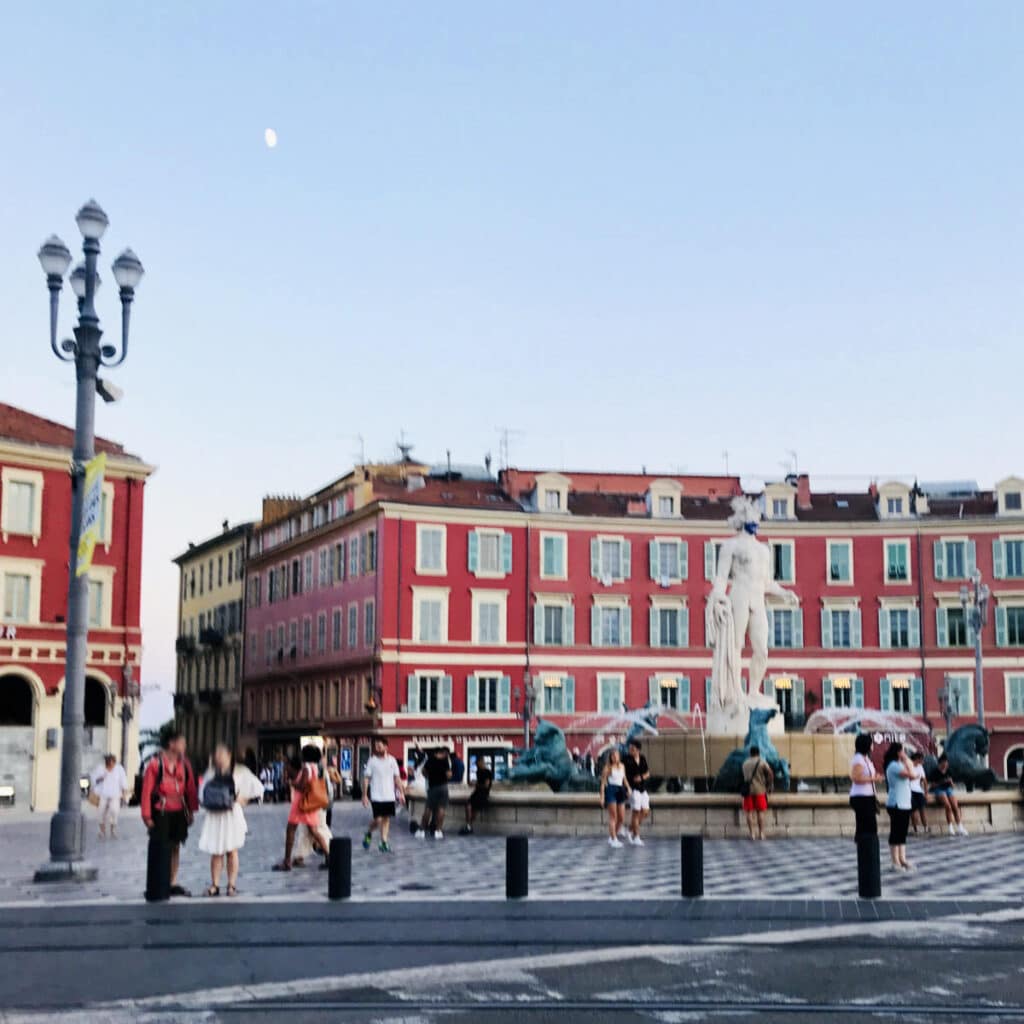
Historically, Nice used to be part of the Duchy of Savoy, and both the language and the city were heavily influenced by nearby Italy. Indeed, Italian was the official language here at one point.
The city of Nice only became part of France in 1860, meaning the memories of Nissart and Niçois are still relatively strong.
6. Alsatian
Since the region of Alsace has changed hands between France and Germany so often, the traditional language of the region is Alsatian, a Germanic language.
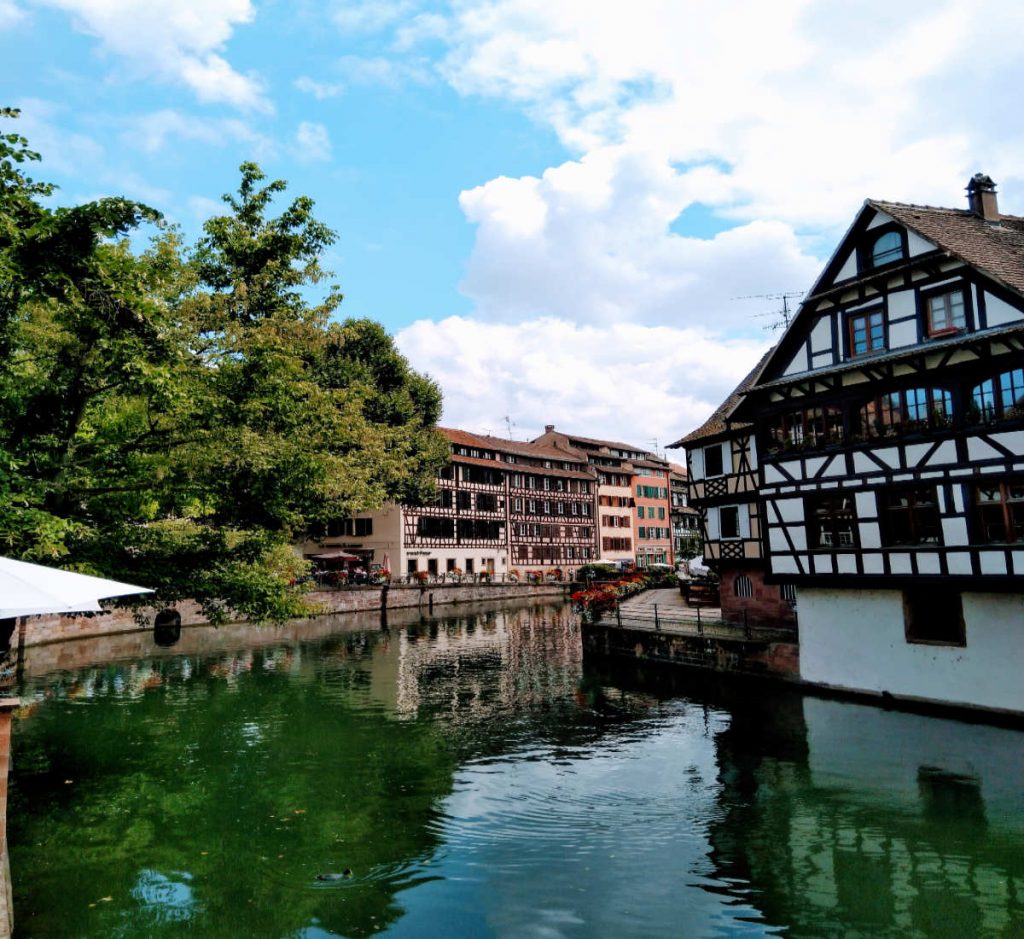
It is a group of Alemannic German dialects spoken on both sides of the Rhine river and closely related to Swiss German.
Official signs are often written in both languages, although French has now become the dominant language. French families in the region will still try to speak the Alsatian at home however, to transmit it to the next generation.
7. Corsican
Corsican is the language spoken around the island of Corsica. It is related to the Tuscan varieties from the Italian peninsula, and therefore also to the Florentine-based dominant Italian.
A small island just off of mainland France, Corsica has a culture of its own. It had been ceded to French King Louis XV by the Republic of Genoa (now part of Italy) to pay off some debts in the year just before Napoleon Bonaparte was born, in 1768.
As such, the island and the Corsican language has maintained its independent nature as it was not the locals who had asked to change countries.
8. Créole
There are many versions of Créole, a dialect of French spoken in current and former French overseas territories like Martinique, Guadeloupe, Haiti, Dominica, and Saint Lucia.
It was also the language previously dominent in the French colony of Louisiana in the U.S.A. Haitian Creole is the language that is the most widely spoken French Creole.
Note, the Canadian and Quebecois French languages are not considered part of Créole.
9. Catalan
Near Spain is the Catalan region of France, where the language spoken used to be Catalan. Catalan includes the department of Roussillon and Pyrénées Orientales.
It is the official language of the small principality of Andorra in the Pyrenees, and a Romance language that is part of the Occitan language family.
10. Basque
Basque is a historical language spoken near Spain, known as Basque Country on the Atlantic ocean. It includes the towns of Bayonne and Biarritz. Basque is a “language isolate”, meaning it is unrelated to any other existing languages.
11. Flamand/Western Flemish
Flamand or Western Flemish is a dialect of Dutch that used to be spoken in the north of France. The dialect was popular in areas of France like near Dunkerque, which are bordering Belgium and near Netherlands.
12. Walloon
Walloon is a Gallo-Romance language, related to old French that was spoken in some villages near Givet in northern France, near Wallonia, Belgium.
13. Francique Lorrain
In the north-east of France, Francique Lorrain is a Germanic dialect that was the local language near Luxembourg, including in departments like Moselle. It is related to Alsatian, which is also related to German.
14. Picard
Picard is a Romance Oïl language from the area around the Picardie and Nord-Pas-de-Calais areas, including cities like Lille.
In 1998, Picard native speakers amounted to 700,000 individuals, the vast majority of which were over 65. Since then the language has seriously declined, and become endangered.
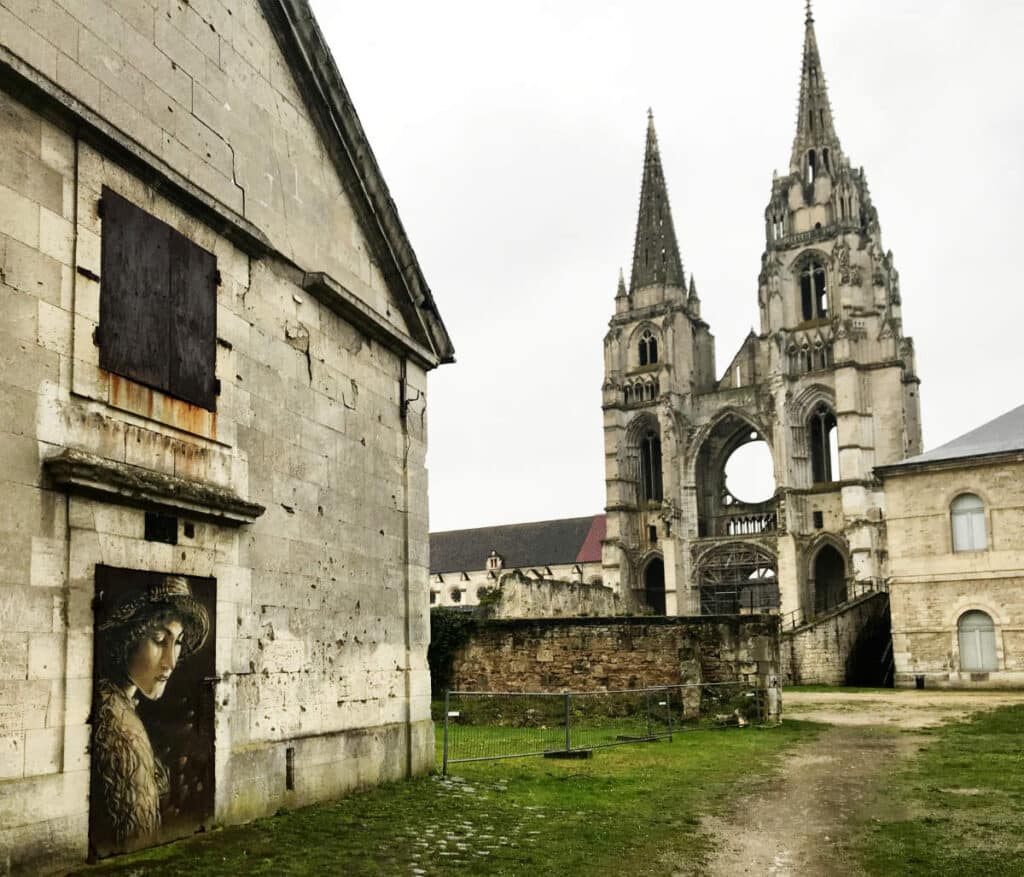
15. Angevin
Angevin is the historical language of the Duchy of Anjou and is closely related to other oïl dialects spoken in western France, especially Norman and Sarthois.
It was the official language of the House of Plantagenet as Geoffrey Plantagenet, the Count of Anjou married Mathilde, the granddaughter of William the Conqueror. Nonetheless, Angevin is now mostly extinct.
16. Arpitan/Francoprovençal
Francoprovençal (also known as Arpitan) is actually not the same language as spoken in Provence, but a mix of the Romance dialects of langues d’oïl and langues d’oc.
It used to be spoken round central-eastern France, all around Mont-Blanc and near Switzerland and Italy, including Rhône Alps. The language includes dialects like Lyonnais (around Lyon) and Savoyard (around Chambéry and the Duchy of Savoy).
17. Poitevin-Saintongeais
Poitevin-Saintongeais is one of the regional romance languages of France, spoken in the historical province of Poitou, now administratively divided between Pays de la Loire and Nouvelle-Aquitaine regions.
The area used to be a stronghold of the Huguenot Protestants who were forced to flee after Sun King Louis XIV revoked the Edict of Nantes in 1685, making protestantism punishable by law.
The Huguenots fled taking their language with them. Some of the French colonists who became known as Acadians and settled in eastern North America came from the area.
18. Bourguignon-Morvandiau
Bourguignon-Morvandiau was the language historically spoken in Burgundy, and specifically the mountainous area of Morvan. It dates back to the Duchy of Burgundy and is a Romance Oïl language.
The bulk of the vocabulary is of Latin origin, but some Celtic words inherited along with Flemish and Germanic words, since the Burgundians who settled here in the 5th century were of Eastern Germanic origin.
19. Champenois
Champenois is a Romance language of the langues d’oïl family that was spoken in and around Champagne, including the city of Reims. It is recognized as a regional language in France and nearby Belgium.

20. Franc-Comtois
Franc-Comtois is a romance Oïl language that was spoken in the Franche-Comté region of France and in the Canton of Jura. It was also spoken in the Bernese Jura in Switzerland.
21. Gallo
Gallo is a Romance language that was spoken between the areas speaking Breton and Norman. It was the shared language among many of those taking part in the Norman conquest of England.
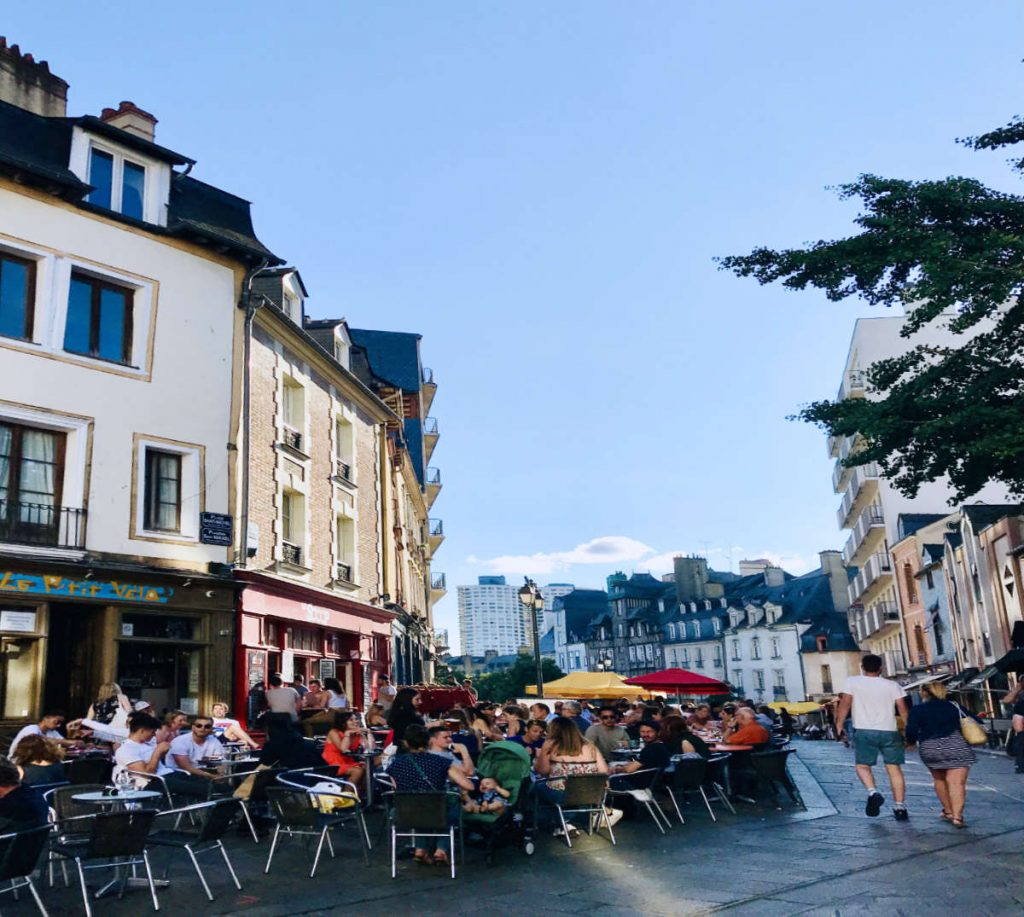
Gallo is not as popular as Breton in Brittany, although it’s historical capitals of Rennes and Nantes are quite large cities. It is taught in some public schools in the area.
22. Gascon
Gascon is an officially recognized regional language in Gascony and Béarn in Nouvelle Aquitaine region of southwestern France. It is also spoken in areas of Catalonia in Spain.
It was also believed to be one of the mother tongues of the English Kings Richard the Lionheart and his younger brother John (Jean sans terre of Magna Carter fame. Their mother was Eleanor of Aquitaine who would have likely exposed them to it, along with her entourage.
23. Ligurian
Ligurian is a Gallo-Italian language from the Ligurian region of Italy and Genoa. It is related to Niçois and Corsican, and is recognized in France as it was relatively widely spoken in Ajaccio (in Corsica) and Monaco.

24. Limousin
Limousin is a dialect of Occitan and a Langue d’Oc language from in and around the Limousin area. Until the 1970s, it was the primary language in these rural areas, although it is now greatly endangered. The biggest city in the area is Limoges, which is famous for its porcelain production.

Today, only a handful of these old regional languages have resisted the onslaught of French. Alsatian, Corse, and Breton are still taught in French schools in those regions.
If you enjoyed that article, you may like to read more about French culture. A bientôt!
